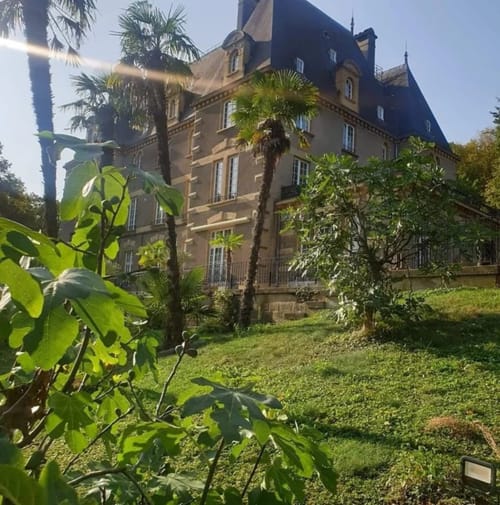The history of Château Guy de Wendel
The Guy de Wendel castle, also called the Château de Tournebride, was built in 1906 by Guy de Wendel (1878-1955), son of Robert de Wendel (1847-1903). It has a park, totalling 4.3 ha. Fountains, ponds, greenhouses and a hanging garden were to be admired. Trees of rare species were planted here. The interior of the castle was fitted with marble panelling and fireplaces. The castle was inhabited until 1978 by Ségolène de Wendel, the last representative of the family who had worked in Hayange for 300 years.



The de Wendel Family
The de Wendel family is a family of ironmasters whose history is inseparable not only from that of Lorraine, but also from the industrial history of France, creating a steel group of international dimensions.
Originally from Bruges, the Wendels, in the person of Jean-Martin de Wendel (1665-1737), settled in Hayange in 1704. They were succeeded by eight generations of ironmasters, often involved in Lorraine and national politics. François (1778-1825) was in particular a member of parliament and president of the General Council of Moselle. His son, Charles (1809-1870), was a Moselle deputy under Napoleon III. The latter's son, Henri (1844-1906), was a member of the Reichstag under the German occupation. Henri's son, François (1874-1949), was the emblematic figure of this dynasty: forge master, senator, general councillor, president of the Forges Committee, regent of the Bank of France. He was the father of the Countess of Mitry (1907-1976), whose name is attributed to a tennis cup, which is still played every year during the tournament of the Tennis-Club of Hayange.
The family lived in the partially demolished Hayange castle, not far from the imposing central office. A nephew of Henri, Guy de Wendel (1878-1955), senator and president of the Moselle General Council, had a castle built in 1906, which was later inhabited by his niece, Ségolène de Wendel (1908-1981), who played an important role during the Resistance and was an essential support for many people from Lorraine who were condemned to flee.


